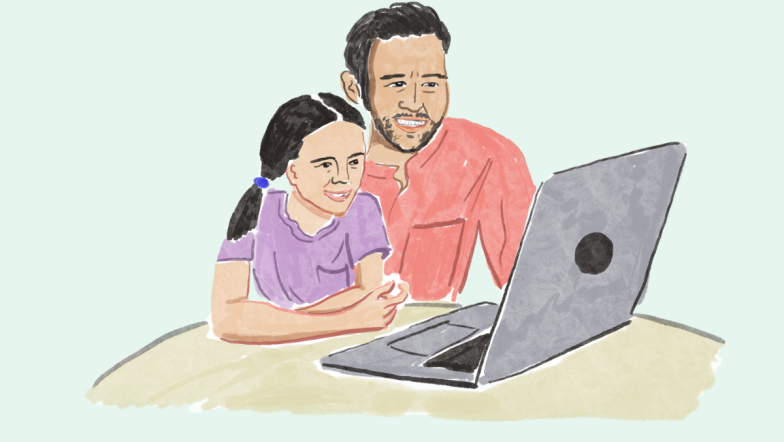Insights from our May COVID-19 response
19 Jun 2020
During a crisis, legal need doesn’t go away. Many legal problems escalate, and new legal problems emerge. Over the past few months, COVID-19 has increased demand for legal help and changed the ways helpseekers look for legal help. By understanding how the landscape is changing, legal services can better reach people who need help and provide that help in meaningful ways.
As the COVID-19 pandemic impacts Australians, we are seeing historically high numbers of people turning online to seek legal help. We have adapted our services to respond to these dynamic circumstances. In this article, we’re sharing our insights from our COVID-19 response to help others in the sector understand and adapt to this changing landscape.
Over the coming months, we will share our data on unmet need and demand for help, as well as our responses to unmet need. This article focuses on the ways that individuals in Australia engaged with our online resources and legal services in April and May. It does not cover our work with charities and not-for-profits.
Online searches and enquiries spiked as restrictions changed
From the initial stages of the COVID-19 outbreak to the end of April, traffic to our website increased by more than double. We noticed a spike in traffic to our online legal resources as well as to our legal service entry-points.

Self-help resources saw the most dramatic spike across our services
We have continued to run all our legal services at full capacity during COVID-19. While we saw moderate increases in requests for legal advice from our services (between 5–12% across our services), we saw the most dramatic increases in engagement with our online resources.
Our Victorian Self Representation Service also saw an increase in demand. The number of enquiries in April and May alone was 11% greater than all enquiries received in the first quarter combined. That increase in demand included an initial spike (in early April) in appeals to the Supreme Court against possession orders (evictions) issued by VCAT, which accounted for 11% of the service’s total enquiries over April and May.
Users need clear, accessible online information to keep up with changing rules
We identified a clear need in the community for accessible online legal resources to help people navigate the constantly shifting environment.
New users on our website were up by 181.8% percent in comparison to February and March. In April, we had more visitors to our website than any other month in Justice Connect’s history. For the first time ever, our top 10 pages were help-seeker focused. Our top 5 most-read resources were split between State and Territory emergency powers—and what they mean for people in each state and territory—and how COVID-19 has affected Victorian Renters.
Online users engaging with our resources have focused on:
- Understanding lockdown restrictions and emergency power laws;
- How to take action to prevent eviction;
- Accessing resources about legal help generally.
The most used search terms people were using to find us included:
- “are courts still open in Australia”
- “NSW covid restrictions explained”
- “state of emergency vic”
- “state of emergency explained”
We believe that our search and web traffic data correlates to traditional face-to-face legal service models being inaccessible. In response, we believe many helpseekers have moved to looking for resources online.
Three out of four people were finding our website via organic search – by plugging in search terms regarding COVID-19 and their legal problems into Google or Bing and being directed to our resources. This translated to a 125% increase of help seekers finding us via a search engine compared to the previous period.
People engaged with online resources in new ways
Engagement with our online resources broadly aligns with areas of community concern. We’ve also seen this engagement reflected across our phone-based legal services.
Victorians needed to better understand rental laws
We received ongoing feedback from our Victorian clients that they didn’t know what was happening with the eviction moratorium and what their rights were in relation to their tenancies. Once legislation was passed on 25 April, renters struggled to understand how to negotiate rent reduction agreements with their landlords and access the Residential Tenancies Dispute Resolution Scheme through Consumer Affairs Victoria. This translated to more people than ever accessing our Dear Landlord self-help resources and our new COVID and tenancy page.
At the outset of the pandemic, we assumed that it would result in a new cohort of tenants facing financial insecurity and housing insecurity due to COVID-19. Early indications suggest that this assumption was correct: new users of our Dear Landlord letter writer in April changed to those who were recently unemployed or on a reduced income, rather than those already experiencing entrenched disadvantage.
In April, 58% of letter writer users were “about to miss a rent payment”, demonstrating that the Dear Landlord is an effective early intervention tool for renters to use prior to falling into rental arrears. In May, 47.6% of letter writers users had “missed two or more rent payments”, which directly shows the effect of COVID on renters’ ability to pay rent.
We note that uptake of the rent reduction scheme is still fairly low comparative to the number of renters in Victoria (around 12,500 rent reduction agreements, which is about 2% of the 650,000 tenancies in Victoria). This demonstrates the importance of a comprehensive and community-led communications strategy to ensure that Victorian tenants are aware of their rights.
NSW users showed high engagement with COVID-19 resources
Prior to COVID-19, traffic to our website was heavily skewed to Victorian web users. Interestingly, in a COVID-19 context, our most accessed resource was the NSW government emergency powers explainer. It was accessed more than twice as often as our second highest ranking resource on Victorian emergency powers.

We believe that this traffic data indicates that there was a lack of clear and consistent information on COVID-19 restriction in NSW, and in this absence people were turning to google searches to try to find information. It also shows that when people are actively searching for information online, there is a significant opportunity to meet user needs with tailored and relevant online content.
New resources must respond to emerging need
We created a new COVID-19 self-help resources hub that pulled together plain language information covering a range of issues including tenancy, employment, banking, finance, courts and emergency powers.
We developed resources in response to both the enquiries we were receiving by individual help seekers, our advocacy insights, as well as the trends we witnessed across our digital channels. We produced new resources and regularly updated existing ones to ensure our information was accurate. Examples of new resources produced in response to help seeker trends include:
- “Accessing courts” resource in response to the spike in people searching for information about courts online;
- State and territory emergency powers resources due to a spike we saw in search term analysis;
- Resources on tenancy and COVID-19 in response to the enquiries we were receiving as well as our advocacy work in Victoria.
We were one of the only services to have accurate, up–to–date online information when the new COVID-19 tenancy legislation was passed. We are building on this by updating our resources for Victorian renters and our Dear Landlord letter writing tool to offer practical, easy to access information and interactive resources for renters. Access to the comprehensive letter writer will also help renters navigate the current COVID-19 tenancy system, including the new Residential Tenancies Dispute Resolution Scheme.
Promoting the right resources on the right channels
In response to clear need for timely and accurate online resources, we focused on promoting our online resources to people looking for help through a range of strategies, including:
- Search engine optimisation to support organic searches leading to connection with our content
- Paid advertising and post promotion across a range of digital channels and in response to the trends we identified.
With the increase of organic and paid content, Facebook became our top referral social channel, proving that help seekers will seek out information and support when prompted in the digital ecosystem they feel most comfortable using. Of note was an increase in men and a younger demographic engaging with us on Facebook compared to the previous period.

We’re continuing to apply our insights and learnings
We know that early legal intervention can prevent ongoing disadvantage. We’ll be using our casework learnings as well as our advocacy insights to identify the demographics most at risk of COVID-19 related legal problems and targeting them with the relevant resources across the channels they are most like to use. This is part of an iterative process of monitoring and message testing.
We will focus our efforts on resources including homelessness and eviction, financial problems, court access and workplace rights. We will be trying various optimisation techniques across paid media, Google Adwords and organic posting, with split messaging across key audiences.
With the imminent launch of our new Dear Landlord letter writing tool to help Victorian tenants navigate the current COVID tenancy laws, we are developing an integrated marketing and communications strategy to ensure that we can help more Victorian tenants to exercise their rights and stay safely housed. This update will help Victorian renters stay housed through a comprehensive, interactive resource to understand their rights and options, including preparing tailored documents such as rent reduction requests and agreements that renters can use to negotiate with landlords and at dispute resolution if required.


